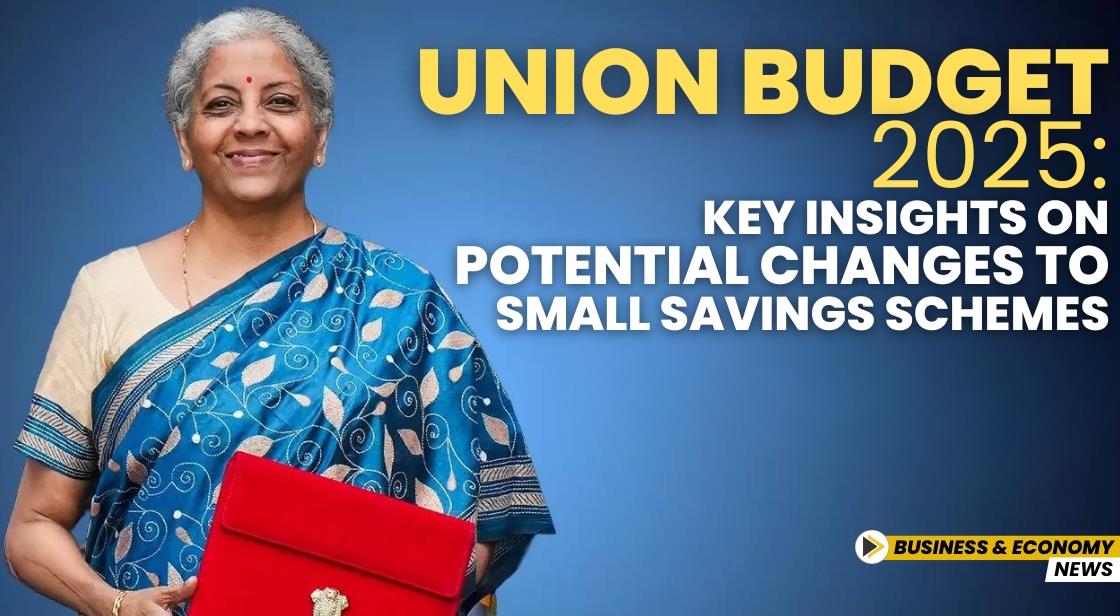Union Budget 2025: Key Insights on Potential Changes to Small Savings Schemes

News Synopsis
Experts predict that the Union Budget 2025, set to be presented on February 1, 2025, could bring significant changes to small savings schemes in India. The Public Provident Fund (PPF), National Savings Certificate (NSC), and Sukanya Samriddhi Yojana (SSY), which are popular among small-scale investors, might see alterations in their interest rates or tax benefits, reflecting broader economic changes and priorities.
Small Savings Schemes: A Staple for Indian Investors
Small savings schemes have long been a cornerstone of investment for Indian households, offering both financial stability and tax advantages. For many investors, the tax benefits associated with these schemes, under Section 80C of the Income Tax Act, have made them an essential tool for long-term wealth building. However, experts now believe that with inflation and changing financial priorities, a closer look at these schemes is inevitable in Budget 2025.
What to Expect in Budget 2025 for Small Savings
As the Union Budget for 2025 approaches, experts are predicting possible revisions to the interest rates of various small savings schemes, including Public Provident Fund (PPF), National Savings Certificate (NSC), and Sukanya Samriddhi Yojana SSY. This could significantly impact the investment landscape for individuals looking to secure their financial future.
Government’s Decision on Interest Rates for Small Savings in December 2024
In a recent move in December 2024, the Central government decided to keep the interest rates on various small savings schemes unchanged for the fourth consecutive quarter. This decision extends the existing interest rates through the January-March 2025 period, with no immediate changes expected for the final quarter of FY2025.
Anticipated Revisions and Relief for Middle-Class Investors
Experts anticipate changes in the tax structure and small savings schemes in the upcoming Budget. "We anticipate a revision in the rates of schemes like PPF and NSC. Further, we expect the government to provide relief to the middle class by modifying the tax slabs," said Shravan Shetty, Managing Director, Primus Partners.
Meanwhile, Himani Mishra, CEO of Brand Radiator, believes that maintaining current interest rates for popular schemes like PPF (7.1%), NSC (7.7%), and Sukanya Samriddhi Yojana (8.2%) would be beneficial, as it would provide stability to savers without causing fiscal imbalances.
The Impact of the New Tax Regime on Small Savings Schemes
Another key factor influencing the future of small savings schemes is the shift to the new income tax regime introduced by the government. The lower tax rates of the new regime have made it an attractive option for many taxpayers, with over 70% of Income Tax Return filers opting for it in FY2023-24. As a result, fewer individuals are investing in small savings schemes, which provide tax exemptions under the older regime.
Collections from Small Savings Schemes Show Decline
The Finance Ministry has noted that collections from small savings schemes might not meet their estimated target for FY2024-25, as an increasing number of taxpayers have moved to the new tax regime. However, despite a fall in overall collections, some schemes, like the Senior Citizen Savings Scheme, have seen impressive growth. The Senior Citizen Savings Scheme nearly tripled its collections to Rs 1.12 lakh crore last year.
Projections for Small Savings Schemes in FY2025
For FY2025, experts predict a slight drop in collections for small savings schemes, estimating a reduction of 8-10%. While the PPF scheme saw a significant rise in deposits in the past decade, collections from smaller schemes may continue to decline as more people choose the new tax regime.
Conclusion
With the presentation of Budget 2025 just around the corner, small savings schemes such as PPF, NSC, and Sukanya Samriddhi Yojana may undergo important changes that could affect their interest rates and tax benefits. While the government has kept interest rates stable in recent months, the pressures of inflation and economic reforms may push for revisions.
For the middle class and small-scale investors, changes in tax slabs and small savings rates could offer relief or bring new challenges. The upcoming budget is poised to shape the future of these schemes and their role in fostering long-term savings for the Indian population.
You May Like









